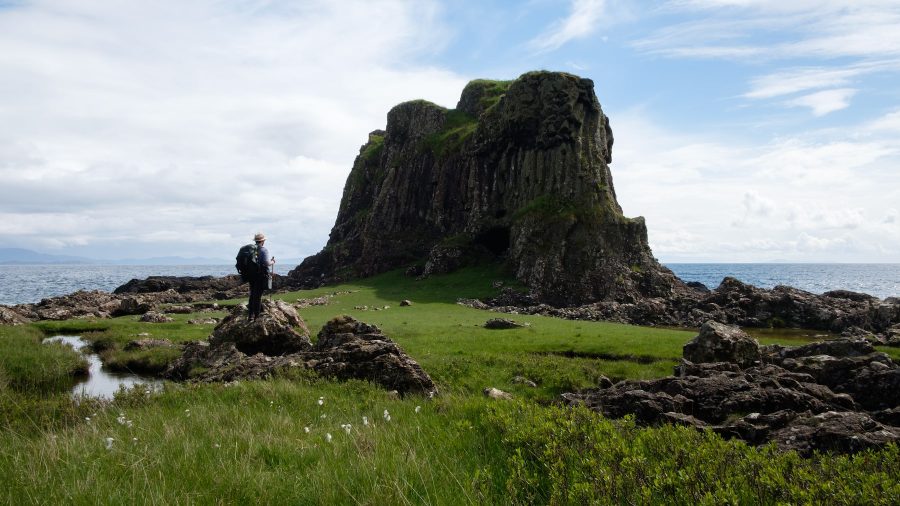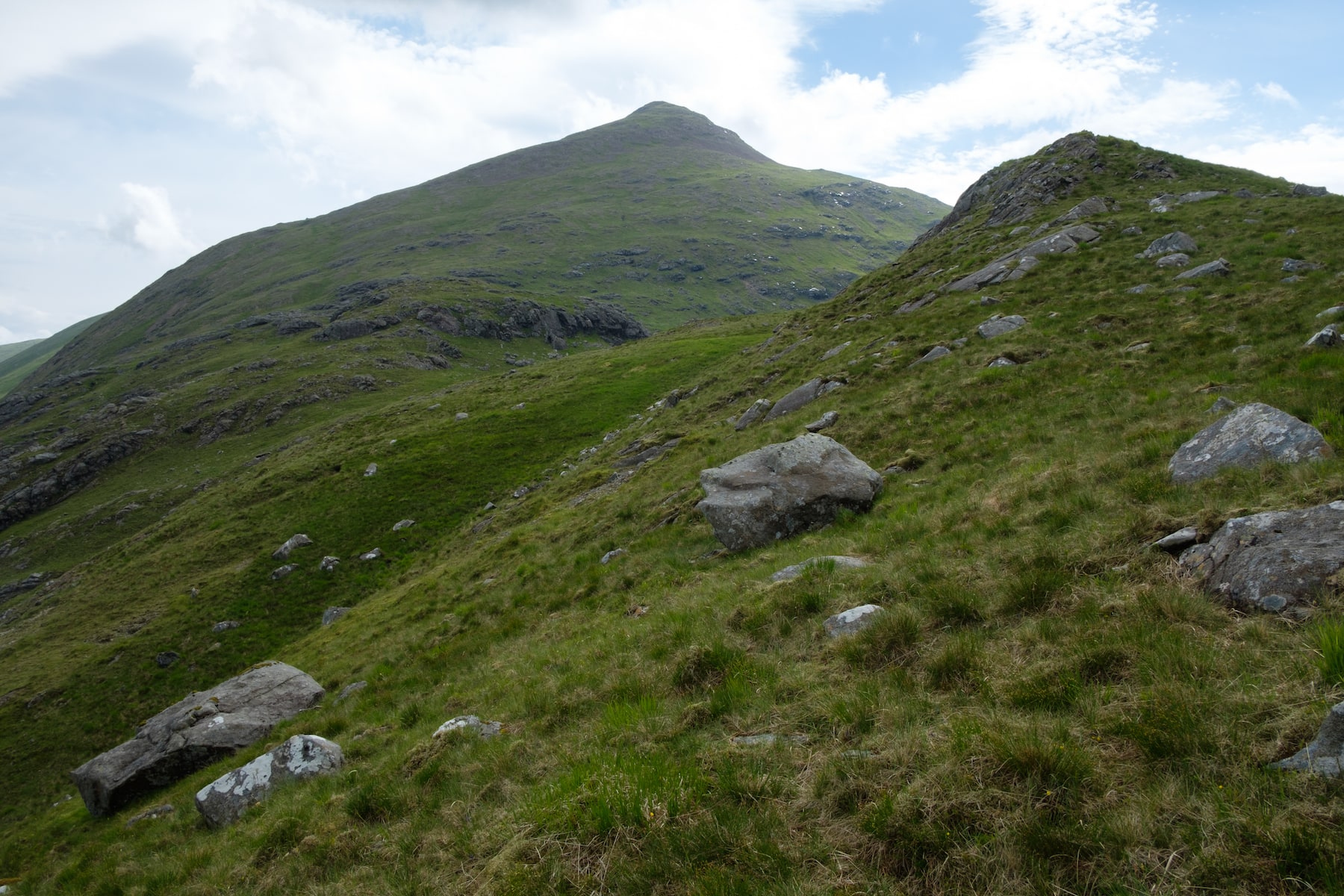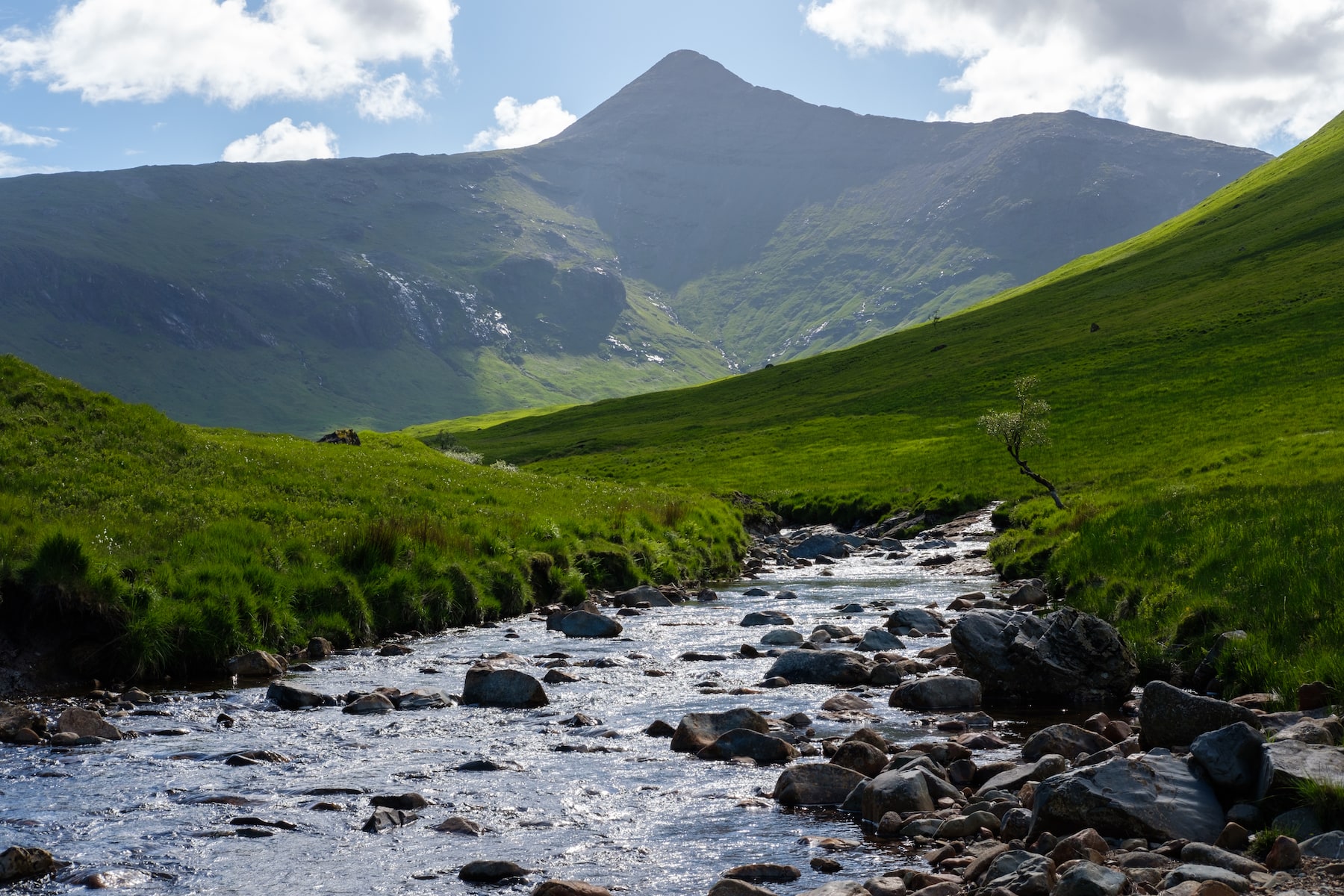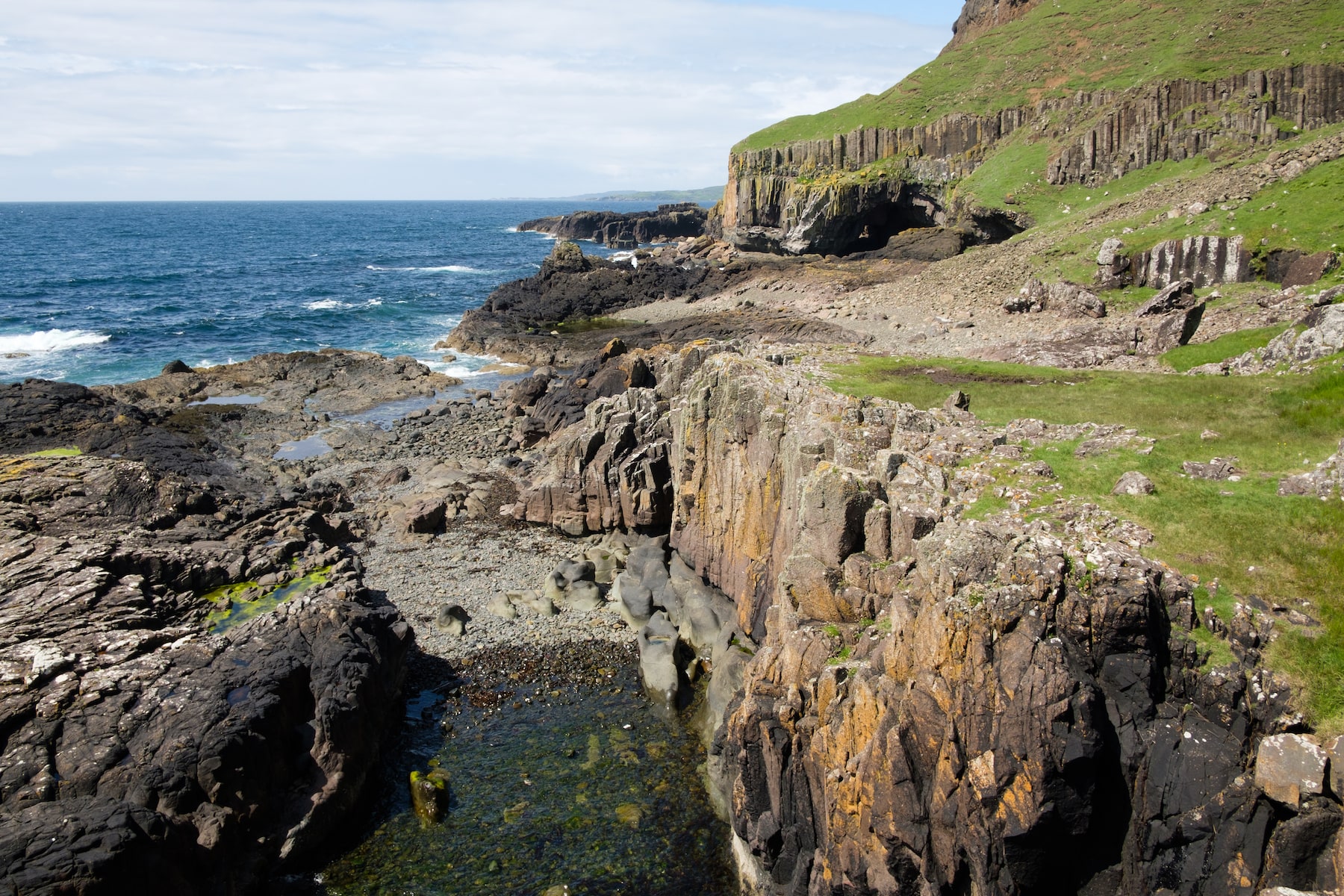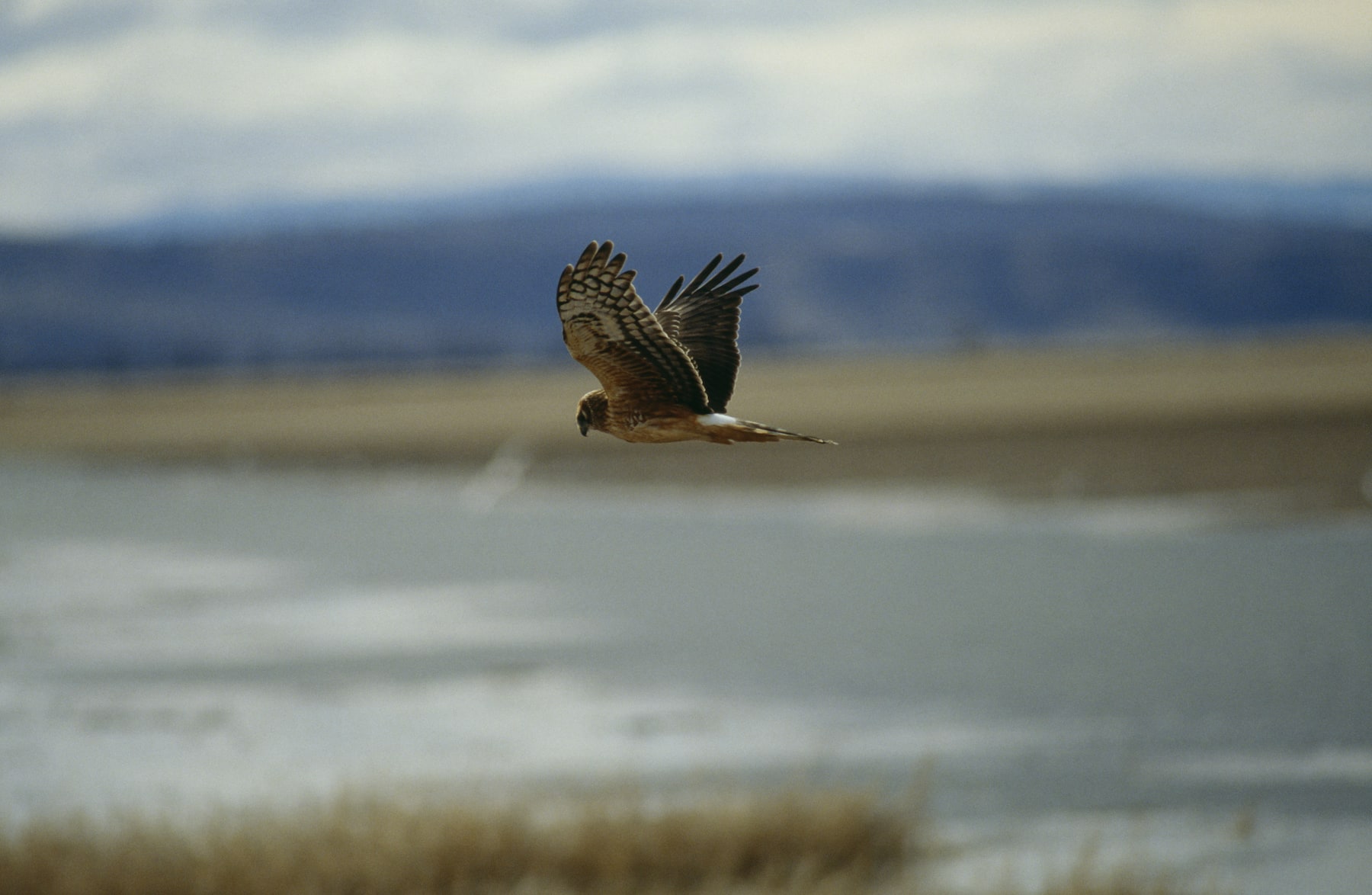“Backpacking on Mull is all about creating a route that looks good on the map and goes where your heart takes you”
In the June 2018 issue of The Great Outdoors,available now, Alex Roddie goes for a long walk away from established backpacking trails. Starting from Glenfinnan, he heads south over the pathless bealachs of Ardgour before hopping on the ferry to the Isle of Mull – where all pretence at a linear walk ends.
To read the full feature, pick up a copy of our latest issue – available with free postage! Or why not subscribe?
Backpacking on Mull is all about creating a route that looks good on the map and goes where your heart takes you. It’s a complex island, full of hidden corners , and defies the creation of a linear trail that goes from A to B without deviation or distraction. As Alex discovered, that’s part of the charm.
So why should you consider planning a backpacking trip to the Isle of Mull? Here are five good reasons.
1. It’s like the Scottish Highlands in miniature
Scotland is renowned the world over for its scenery: mountain ranges, glens, lochs and lochans, fjords, intricate coastlines, islands, forests, moorland and much more. Mull is a microcosm of this bigger picture. Separated from the mainland by the Sound of Mull, which is only a few miles wide, Mull has one Munro (Ben More, 966m) and several distinct ranges of lesser mountains and hills. Numerous sea lochs bite deeply into its craggy coastline, some big enough to have islands of their own, such as Ulva and Eorsa. There’s so much variety here you could spend several trips exploring it and only scratch the surface.
2. Deserted hills
While there are many hills on Mull, only two feature on the prominent hill lists of the Munros and Corbetts. Sunny weekends in summer will certainly see other walkers on the popular routes up Ben More, but other hills remain quiet at all times of the year, apart from the odd visitor. In his feature, Alex writes:
My loose plan had been to traverse Ben More the next morning, but a prowling thunderstorm put me off that idea when I awoke and saw a cloud cap sitting over the exposed ridge I’d have to traverse. Lightning flickered far out at sea. But I wasn’t disappointed – the lower adjacent summit of Cruachan Dearg looked even more interesting, and I decided to climb this steep and shapely little peak instead. It was an abrupt ascent. With scree sliding beneath my feet as I clambered from rock ledge to rock ledge, I revelled in the sense of being high on a peak I imagined few bothered to climb. Ben More must surely attract all the attention in this range of hills. Cruachan Dearg isn’t even a Corbett; at 704m, it qualifies as a Graham Top. But list-tickers who avoid this fine viewpoint are missing out.
3. World-class walking beneath miles of sea cliffs
Mull’s coasts are some of the most spectacular and dramatic in Scotland. While many of these coastal regions are pathless – such as ‘the Wilderness’ of Ardmeanach’s peninsula – others feature miles of splendid, albeit rugged, trail:
The south cost of Mull, from Malcolm’s Point to Lochbuie, was the best stage of the walk. Malcolm’s Point required an out-and-back trip of several miles from Carsaig, but it was worth it to see the dramatic Carsaig Arches and the sea booming beneath them. Here, prehistoric cliffs crumbled into the waves, and hidden coves with secret caverns provoked the imagination. It’s a place of rough paths, sea stacks, wild goats and unexpected views. For a day I walked through this enchanted landscape and kept my fingers crossed that the good weather would hold.
4. Superb varied views
Mull’s views are linked inextricably to the island’s variety. Views from hilltops offer a varied texture of mountains, glens and water, while views from sea level often delight with the subtle colours of the coastline itself.
5. Wildlife
This island is justifiably famous for its wildlife, and has earned a reputation as one of the top wildlife-spotting destinations in the UK. Whales, dolphins and seals can all be seen out at sea, along with otters, which often hunt along the coastal shores. Mull is also regarded as the best place in the UK for spotting golden eagles and white-tailed sea eagles. Hen harriers are another very special resident of the island:
It was here that I saw my first hen harrier, repeatedly flying low overhead; at first I thought it was an owl, until I heard its distinctive chattering call. It was a special moment. I had seen no eagles during my time on Mull, but I’d spied an otter in the wild – only the second I’d ever seen – and my first hen harrier. At a time when the hen harrier is being driven towards extinction in England, I felt privileged to have seen one on this magic island.
What about the lack of waymarked long-distance trails? This should be no barrier – just get out your maps and plan your own route!

